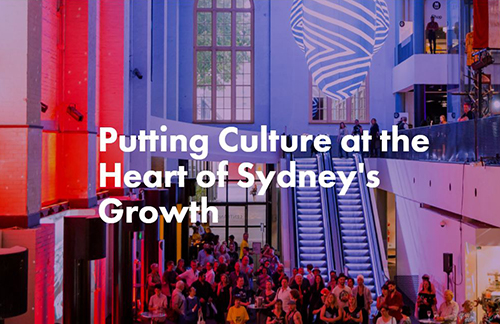The National Institute of Dramatic Art (NIDA) is an important member of The Sydney Culture Network, alongside 27 leading cultural institutions.

The National Institute of Dramatic Art (NIDA) is an important member of The Sydney Culture Network. Since its creation over two years ago, the network has grown to encompass 27 of the city’s leading cultural institutions, with its own constitution, management council and innovative and ambitious program agenda.
Supported strongly by the University of New South Wales, the network’s aim is to ‘make Sydney a global leader in valuing culture’, particularly against a backdrop of the city’s unprecedented growth. With a wide variety of prominent arts partners involved – from Carriageworks to Campbelltown Arts Centre to the Museum of Contemporary Art (MCA) and Art Gallery NSW – it is well on the way to do that.
Dr Melissa Laird, Executive Director Learning and Teaching, is NIDA’s representative on the network and is enthusiastic about the impact that this collaboration will have.
‘NIDA is always interested in opportunities, and the potential for development, for our existing and future students,’ said Dr Laird. ‘This network opens up a city-wide network to support research and student learning. Research projects include audience development across all of our organisations.’
‘Another aim of the network is to make a difference to how people perceive Sydney as a cultural destination. The tourism industry is an obvious area that is useful for us to intersect with. The statistics tell us that people come to Sydney for the harbour, the gardens and the cultural institutions. We can encourage that traffic to explore greater Sydney’s cultural experience � from the MCA, up to NIDA and UNSW, across to AFTRS and out to Campbelltown for example. There are lots of ideas and initiatives that we are exploring.’
‘We all share a collective interest in greater Sydney’s cultural landscape and are passionate about making links with a cultural imperative,’ explained Dr Laird. ‘This network encompasses potential for aligned programming, and a shared vision for what Sydney can be as a cultural centre. It increases relationships to locations where students can perform and research � where they can access information, and practice in diverse locations such as the Botanical Gardens. It gives us access to data, and it gives our Master of Fine Arts (Cultural Leadership) students additional networks for interaction.’
The network is referencing an international model of a shared cultural corridor � mapping Sydney with creative arts and practice at its core.
UNSW Chancellor David Gonski AC said that he was unaware of any other major city where a group of arts organisations, cultural institutions and academics have come together as a peer-to-peer, not-for-profit organisation designed to support cooperation between its members and nurturethe city’s cultural landscape.
Dean of Art and Design at UNSW, Professor Ross Harley, has referred in the past to a similar models of collaboration � New York City’s Museum Mile � where nine museums on a section of Fifth Avenue developed an alliance to boost support of the arts and local galleries.
‘This network is about much more than marketing the assets of each individual participant,’ said Dr Laird. ‘It’s about drawing on and sharing one another’s resources and experience, and how we collaborate to generate new ideas and creative engagements. There are also valuable professional development opportunities in the arts and cultural sector which can be shared across the institutions. There are many possibilities.’
The Sydney Culture Network will launch to the public in early 2018. All Sydney cultural organisations are invited to participate. Contact the Network for more.
Image credit: Museum of Applied Arts and Sciences. Photo: Anna Kucera.

